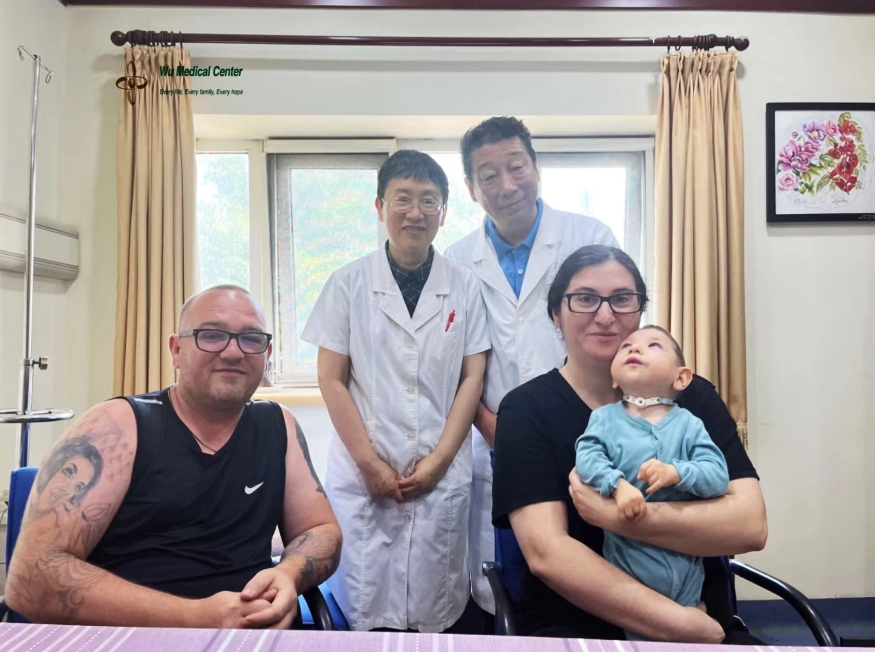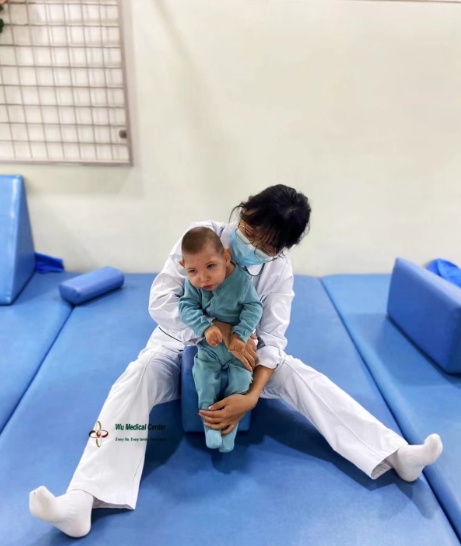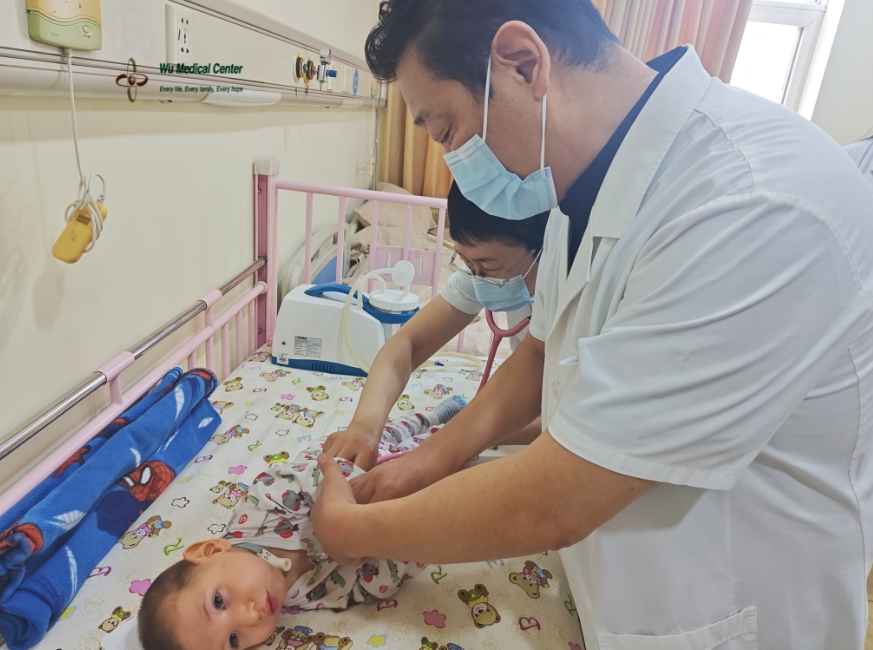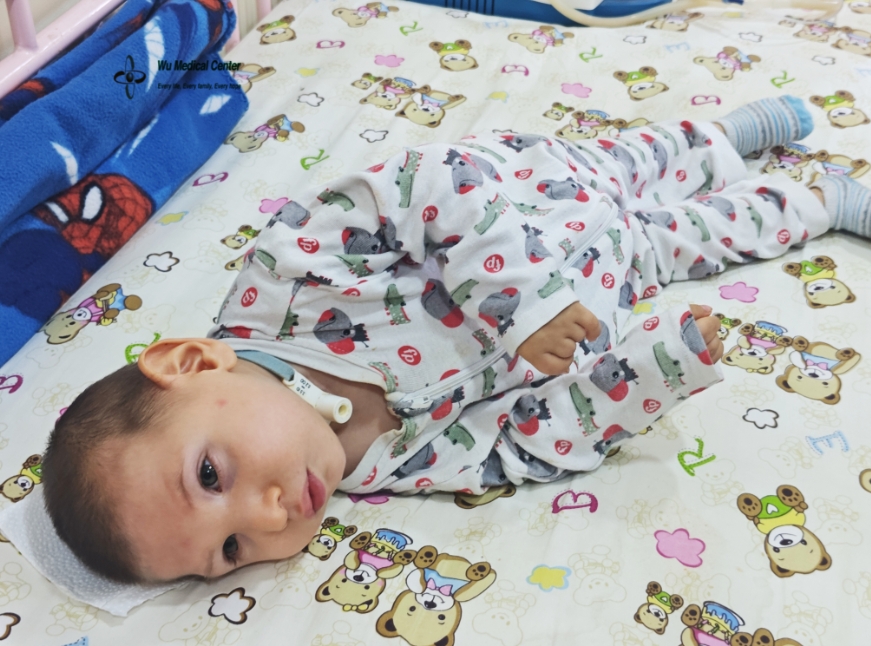Dinu Vladimir-Alsed-Ischemic hypoxia-induced brain injury-(Romanian)
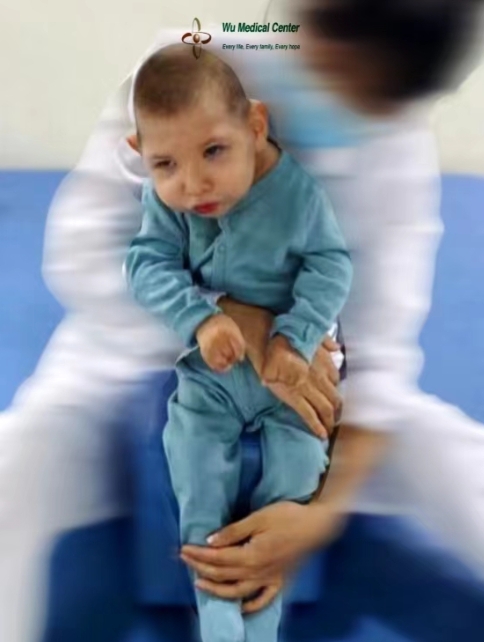 Patient's name: Dinu Vladimir-Alsed
Patient's name: Dinu Vladimir-Alsed
Gender: Male
Age: 3 years old
Nationality: Romanian
Diagnosis: 1. Ischemic hypoxia-induced brain injury, 2. Cerebral palsy.
Admission condition:
The patient is a preterm infant who was found to have brain atrophy and microcephaly during examination. The child had incomplete glottic closure. He experienced a cardiac arrest due to aspiration pneumonia at two months old and underwent CPR, tracheostomy, and gastrostomy (which has since been removed). After that, he experienced another 3 cardiac arrests. He has had suspected seizures that occur once a day for approximately 20 seconds. Currently, he is taking Baclofen and Tonotil. The patient is experiencing significant growth stagnation and severe cognitive and motor dysfunction and due to the lack of development of the visual cortex, resulting in his blindness.
Physical Examination upon Admission:
The patient's blood pressure was 91/71 mmHg. He had a sinus rhythm but was arrhythmic. His heart rate varied between 65 and 105 beats per minute. His respiratory rate was 24 breaths per minute. His height was 68 cm, and his weight was 7 kg. A tracheostomy site is visible on his neck. There are no broken or bleeding spots on the rest of his skin and mucosa. There is no congestion in his pharynx. The bilateral symmetry of his thoracic cage is intact. His respiratory sounds are clear in both lungs, and there are no dry or wet rales heard. His heart rhythm was irregular, and there were no obvious murmurs heard in the auscultation areas of his heart valves. His abdomen is soft, without pain or rebound tenderness, and his liver and spleen are not palpable. There is no edema in his lower limbs.
Neurological Examination:
The patient was clear-headed. He showed little or no response to changes in surrounding sound. He could cry and scream, but could not form simple words or speak. His pupils are equal in size and round, with a diameter of about 4mm. He had delayed reaction to light and no vision. His swallowing and chewing abilities were weak, and he could only eat thick food or small tablets. His limb muscle strength was grade 4, and both his hands could perform purposeless grasp. His limb muscle tone was high, and he could not sit, turn over, or crawl. His quadriceps reflex was hyperactive, and sucking reflex, grasp reflex, and feeding reflex were all positive. His Babinski sign was positive on both sides. He had negative findings for meningeal irritation signs.
Treatment Process:
The patient was admitted with a clear diagnosis of "ischemic hypoxia-induced brain injury and cerebral palsy." He was given neural stem cell + mesenchymal stem cell + CAST treatment, which increased the number of brain nerve cells, repaired nerve damage, improved cerebral blood circulation, regulated the immune system, nourished brain nerves, and other treatments. Additionally, he received comprehensive rehabilitation treatment.
Post-treatment:
The child's condition has improved significantly, with an increase in his responsiveness to the outside world, as well as an improvement in his sensitivity to sound. His eyes can now track light, and his limbs have decreased muscle tone to a generally normal range. His back muscle strength has improved, and he has better control over maintaining a sitting position. His limb flexibility has improved, as well as his hand grasping and extending abilities. Overall, his neurological function has improved by 30%. His heart function is stable compared to when he was admitted, with a heart rate of 75-90 beats per minute when at rest.
